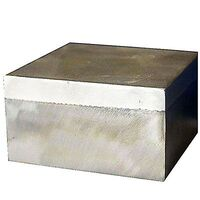1. Introduction
Just 24 hours ago, a major architectural firm in Chicago unveiled a new mixed-use development featuring a striking corten steel facade paired with zinc clad dormers—sparking renewed interest in sustainable, low-maintenance metal cladding systems. As cities push for greener building practices, metal clad solutions are surging in popularity for both commercial and residential projects.

But what exactly does ‘metal clad’ mean? And how do you choose between options like aluminum clad steel, stainless clad aluminum, or titanium clad panels? In this deep dive, we’ll unpack the metal clad meaning, compare key types of clad metals, and explore their roles in everything from metal clad buildings to electrical wiring and industrial plate fabrication.
2. What Is Metal Clad? Understanding Clad Metals
The term ‘metal clad‘ (or ‘metalclad’) refers to composite materials made by bonding two or more different metals together. This process—often achieved through roll bonding, explosion bonding, or electroplating—combines the best properties of each metal: strength from one, corrosion resistance from another, and cost efficiency overall.
For example, aluminum clad stainless steel merges the lightweight nature of aluminum with the durability of stainless steel. Similarly, copper nickel clad or cupro nickel clad materials offer excellent marine corrosion resistance, making them ideal for shipbuilding or offshore platforms.
- Common bonding methods include hot rolling, cold rolling, and explosive cladding.
- Electroplating techniques like chromium electroplating or electroless nickel are used for thinner surface layers.
- Alloy clad variants such as 2024 T3 clad or 7075 T6 clad are widely used in aerospace for high strength-to-weight ratios.
3. Architectural Applications: From Metal Clad Walls to Roofs
In architecture, ‘metal clad‘ typically describes exterior systems like metal clad siding, metal facade panels, or roofing. These aren’t just aesthetic—they offer weather resistance, longevity, and design flexibility.

Popular choices include corten steel siding, known for its rust-like patina that requires no painting, and zinc metal siding, which develops a soft gray finish over time. Both are used in modern steel clad houses and commercial metal clad buildings.
Standing seam systems—like colorbond standing seam or PAC Clad standing seam roof—are favored for their clean lines and water-tight performance. Vertical standing seam metal siding adds dramatic visual rhythm to a metal clad wall, while corrugated steel facade panels offer industrial charm with exterior corrugated metal siding.
Other notable options:
- Copper siding: Ages beautifully, often used in high-end residential projects.
- Zinc clad roof and zinc clad dormer: Sustainable and 100% recyclable.
- PAC Clad coping and PAC Clad column covers: Engineered for durability in commercial builds.
4. Industrial and Technical Uses of Clad Metals
Beyond architecture, clad metals play a critical role in heavy industry. Clad steel—such as stainless clad aluminum or aluminum clad steel—is used in chemical processing, oil refineries, and heat exchangers where corrosion resistance and thermal conductivity must coexist.

Metal clad wire, including aluminum clad steel wire and Cu clad wire, is common in electrical transmission. It offers the conductivity of copper with the tensile strength of steel, reducing material costs without sacrificing performance.
In plate fabrication, engineers select specific clad combinations based on environment and stress:
- Boiler plate steel with stainless overlay for high-pressure vessels.
- Inconel 625 weld overlay on carbon steel plate for extreme heat resistance.
- Chrome carbide overlay plates for abrasion-prone mining equipment.
Common plate types include 316 stainless steel plate, 6061 T6 aluminum plate, and mild steel plate—all available in thicknesses like 1/8 inch steel plate or 3/16 metal plate.
5. Cost, Maintenance, and Sustainability Considerations
Cost varies widely. Corten siding cost runs higher than standard steel but eliminates painting expenses over decades. Aluminum clad sheet is mid-range and lightweight, while titanium clad remains premium due to material scarcity.
Maintenance is generally low: zinc and corten are self-protecting; aluminum and stainless resist staining. Metal weatherboard and metal steel plate systems rarely need recoating.
Sustainability is a major driver. Most clad metals are fully recyclable. Zinc and aluminum have high recycled content, and PAC Clad products often carry environmental certifications.
6. Conclusion
Whether you’re designing a steel clad house, specifying metal clad insulation for piping, or selecting a stainless steel metal plate for industrial use, understanding the nuances of clad metals is essential. From the aesthetic versatility of a corten steel facade to the technical precision of aluminum clad stainless steel, metal clad solutions merge performance, economy, and design in ways few materials can match. As green building standards evolve, expect clad metals to remain at the forefront of innovation.
Our Website founded on October 17, 2012, is a high-tech enterprise committed to the research and development, production, processing, sales and technical services of ceramic relative materials such as Metal. Our products includes but not limited to Boron Carbide Ceramic Products, Boron Nitride Ceramic Products, Silicon Carbide Ceramic Products, Silicon Nitride Ceramic Products, Zirconium Dioxide Ceramic Products, etc. If you are interested, please feel free to contact us.
